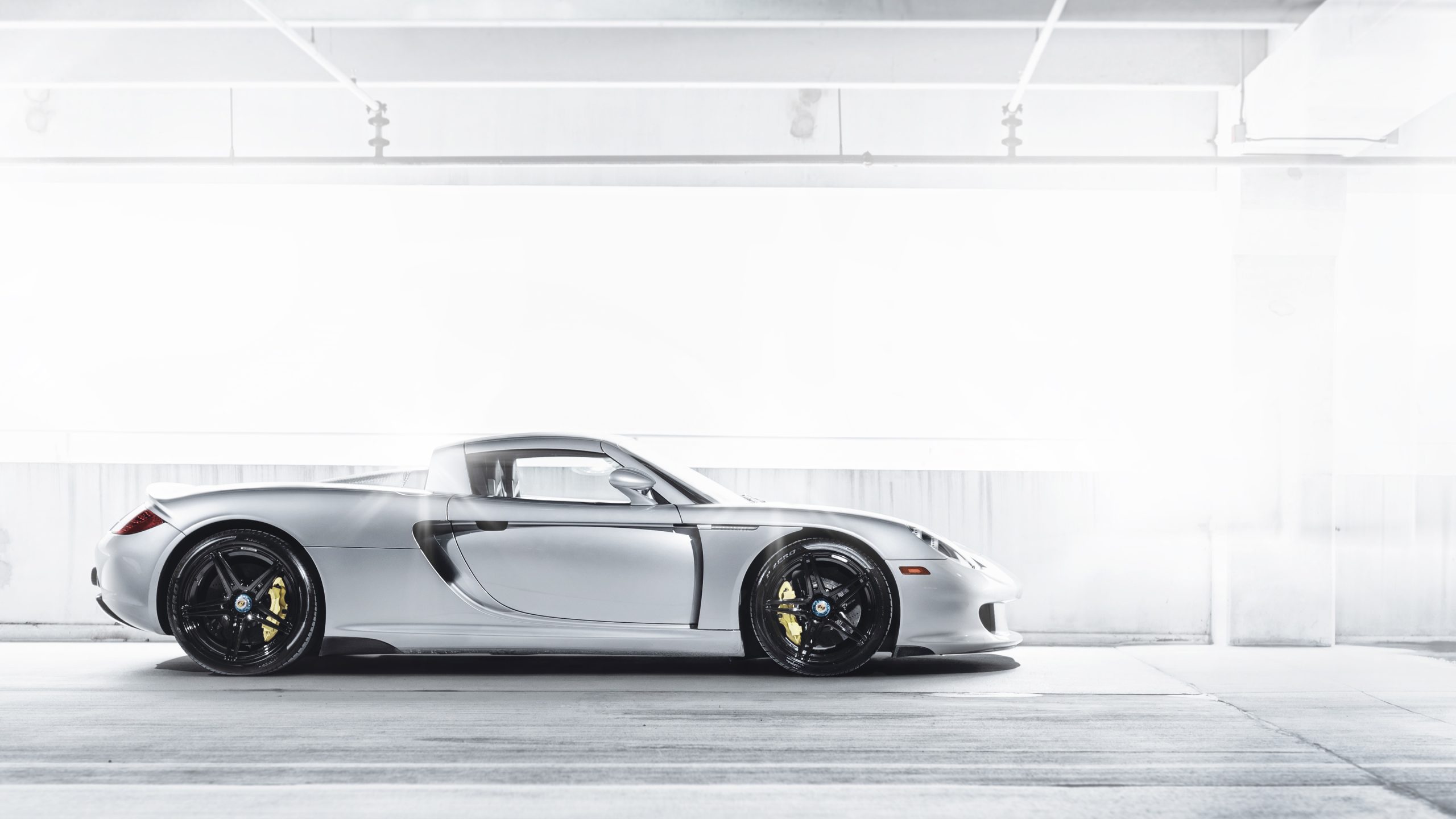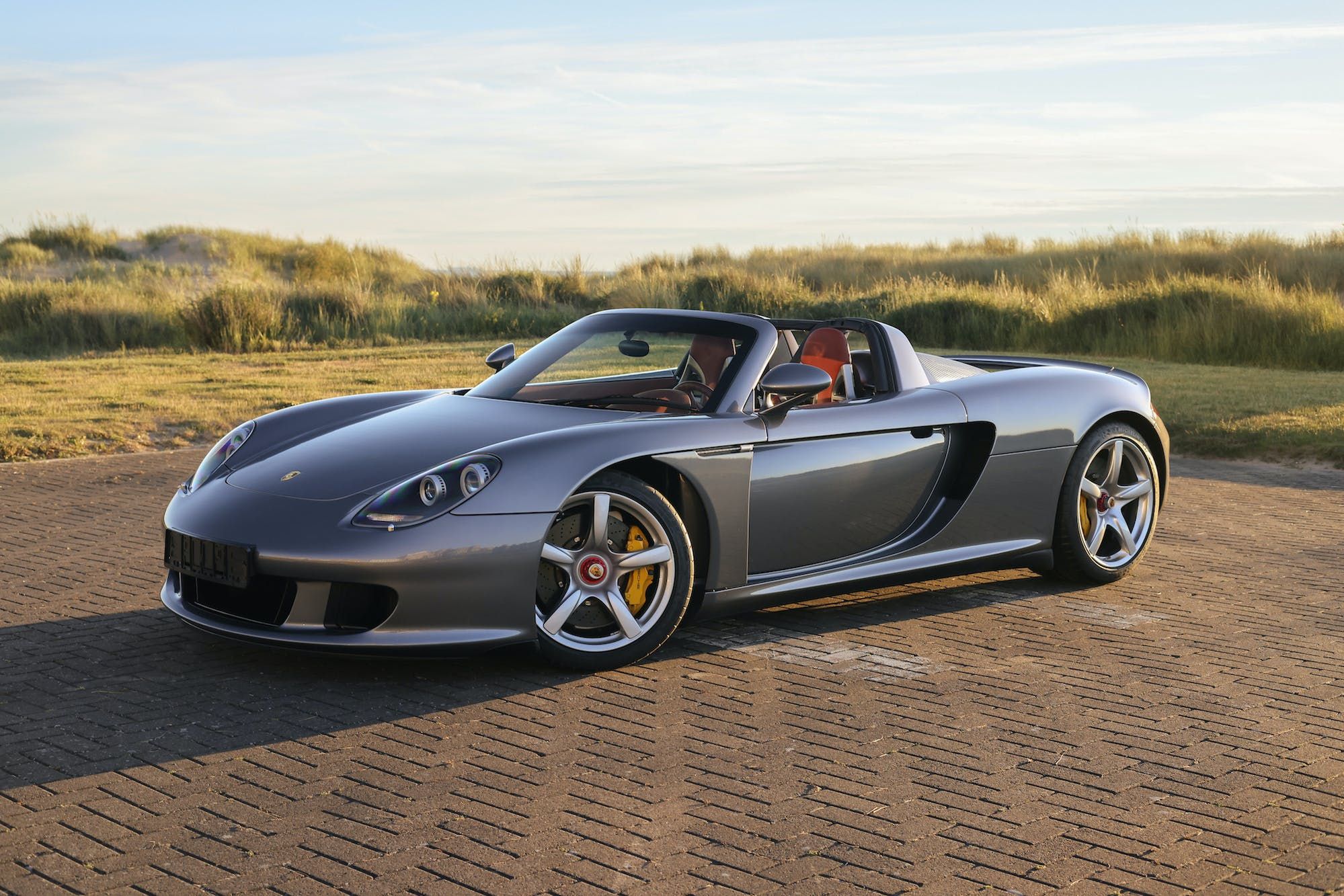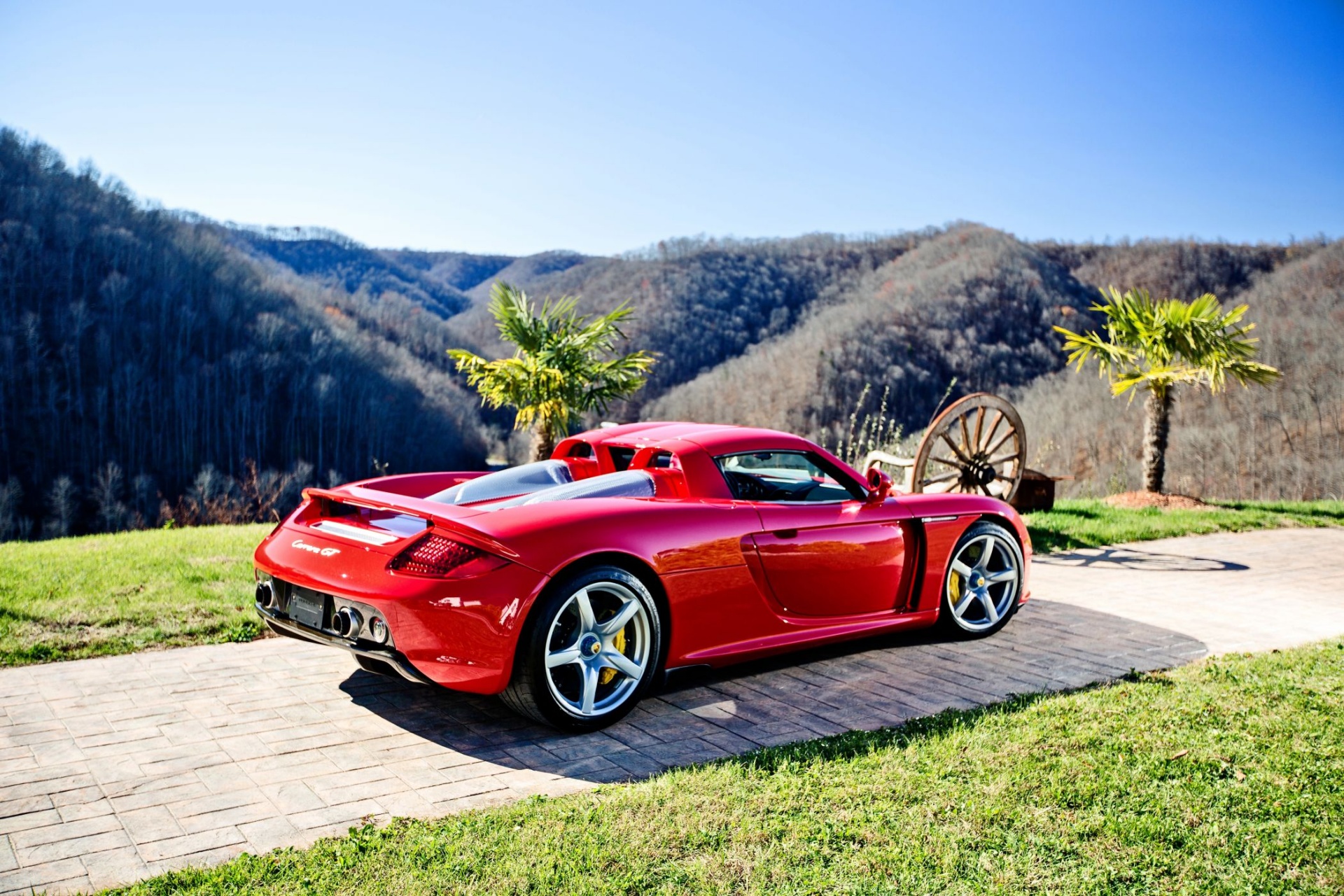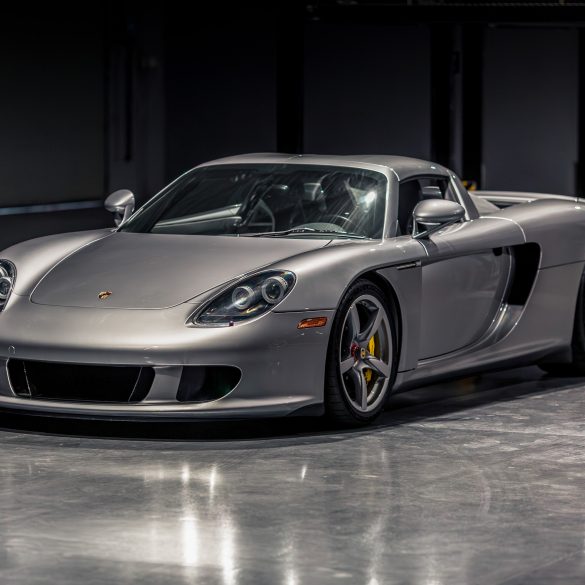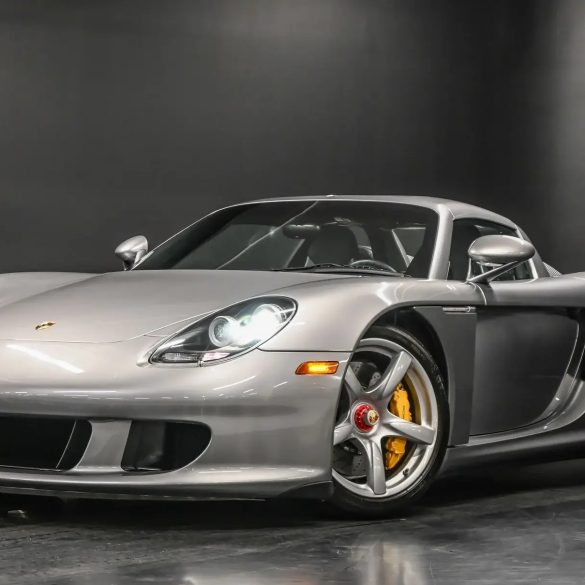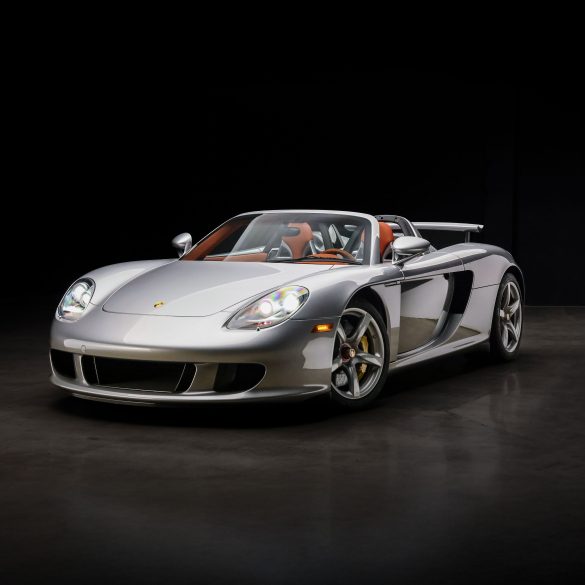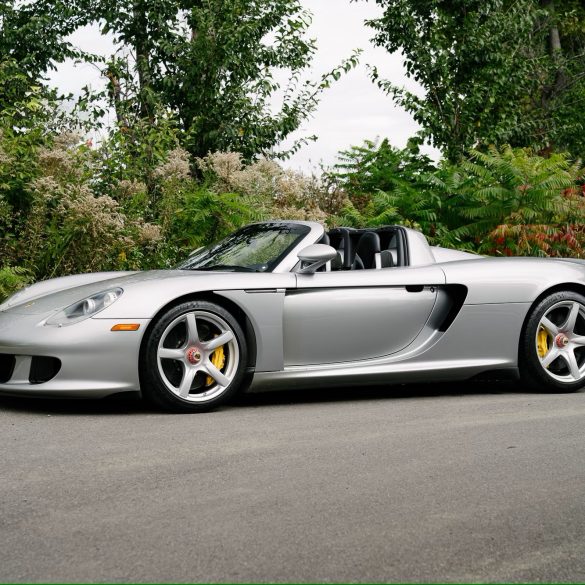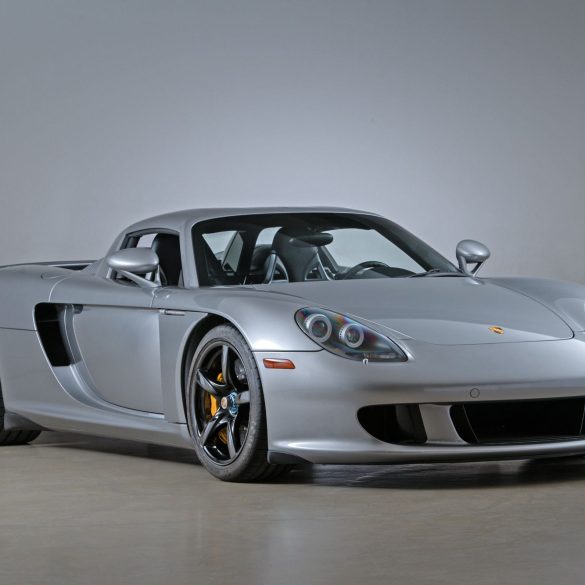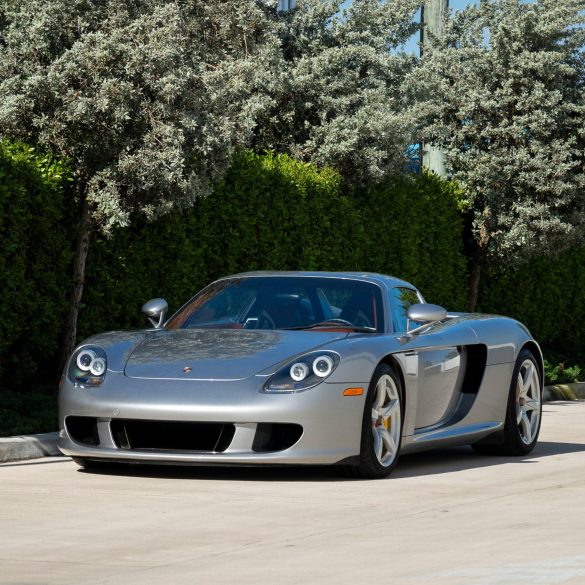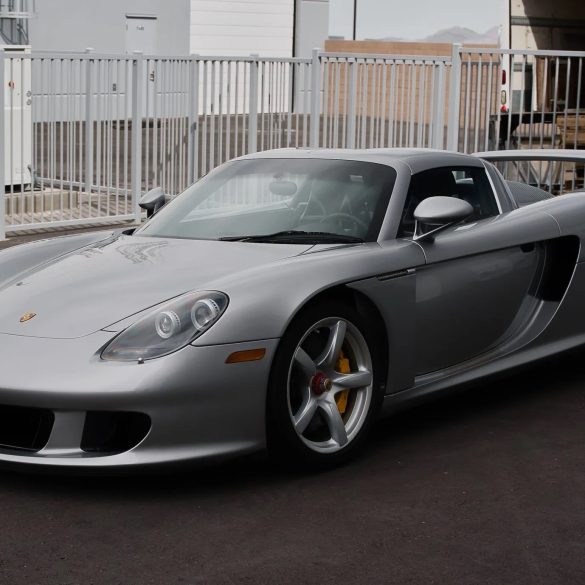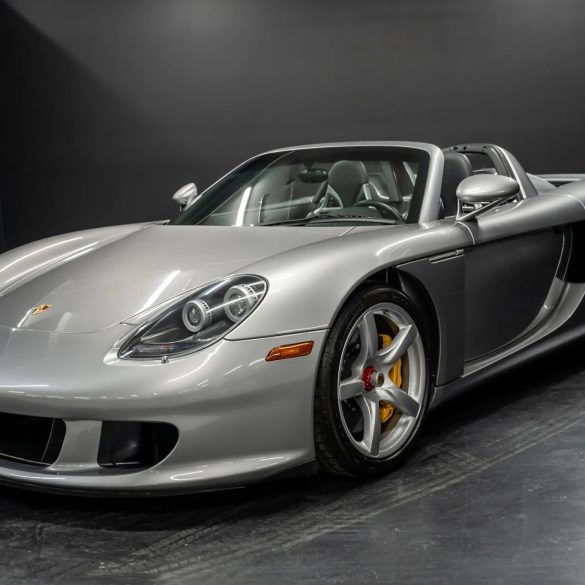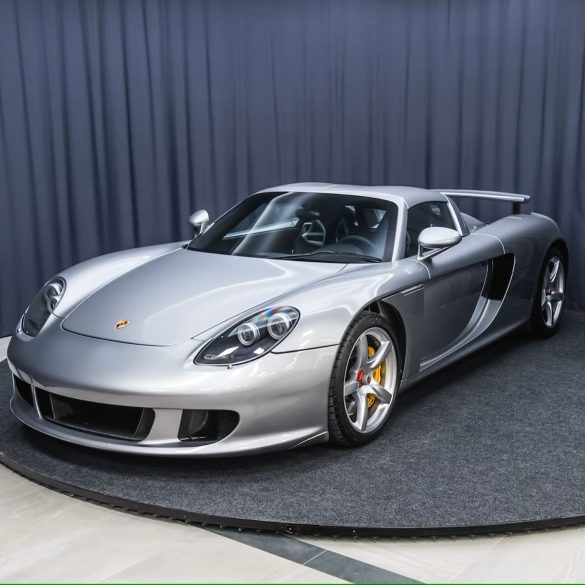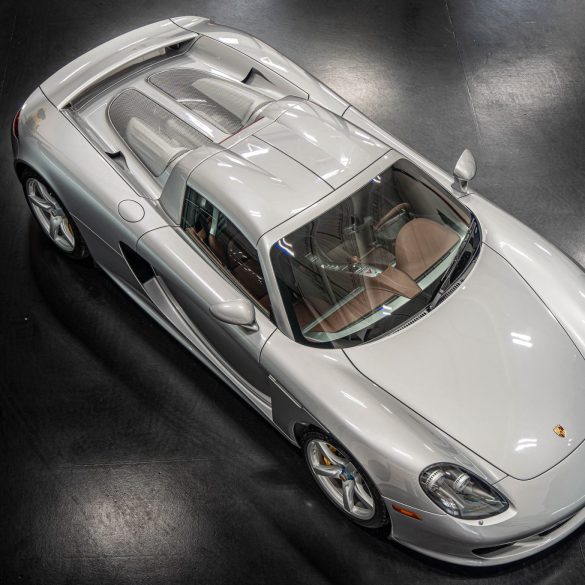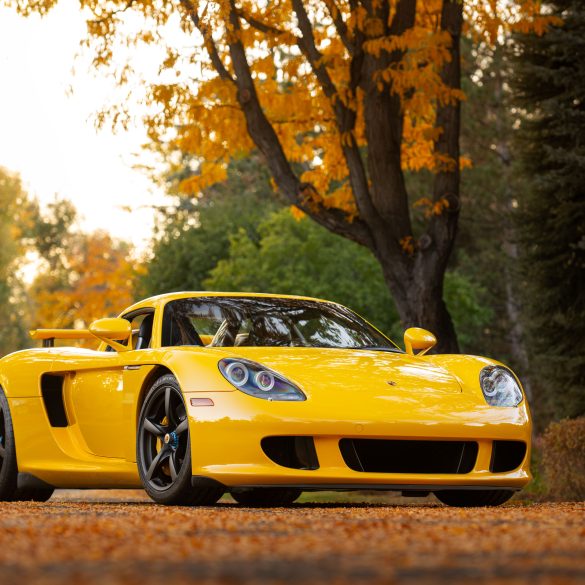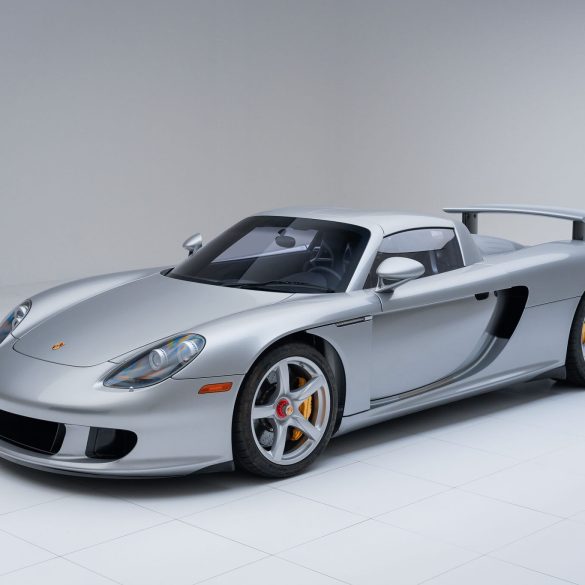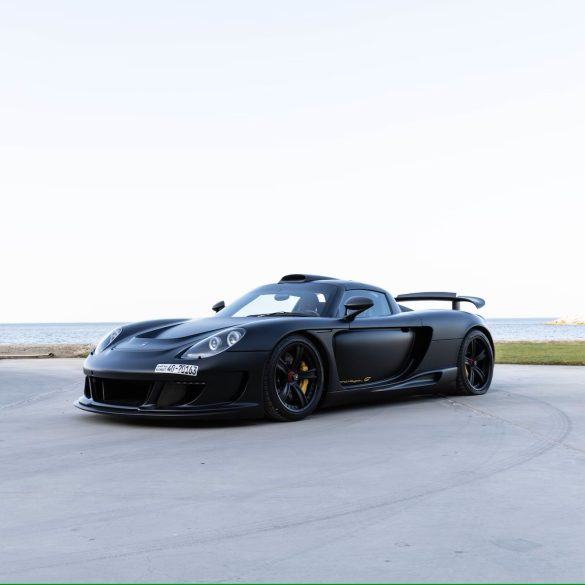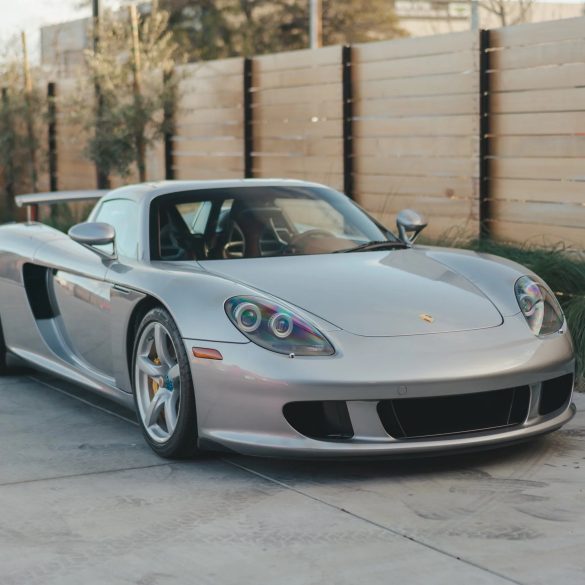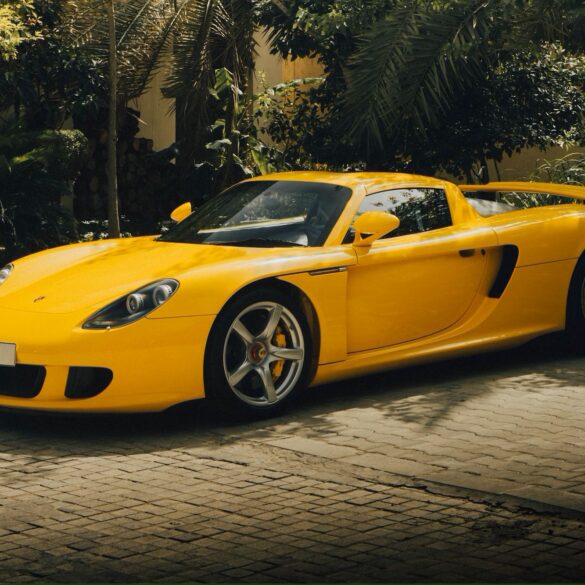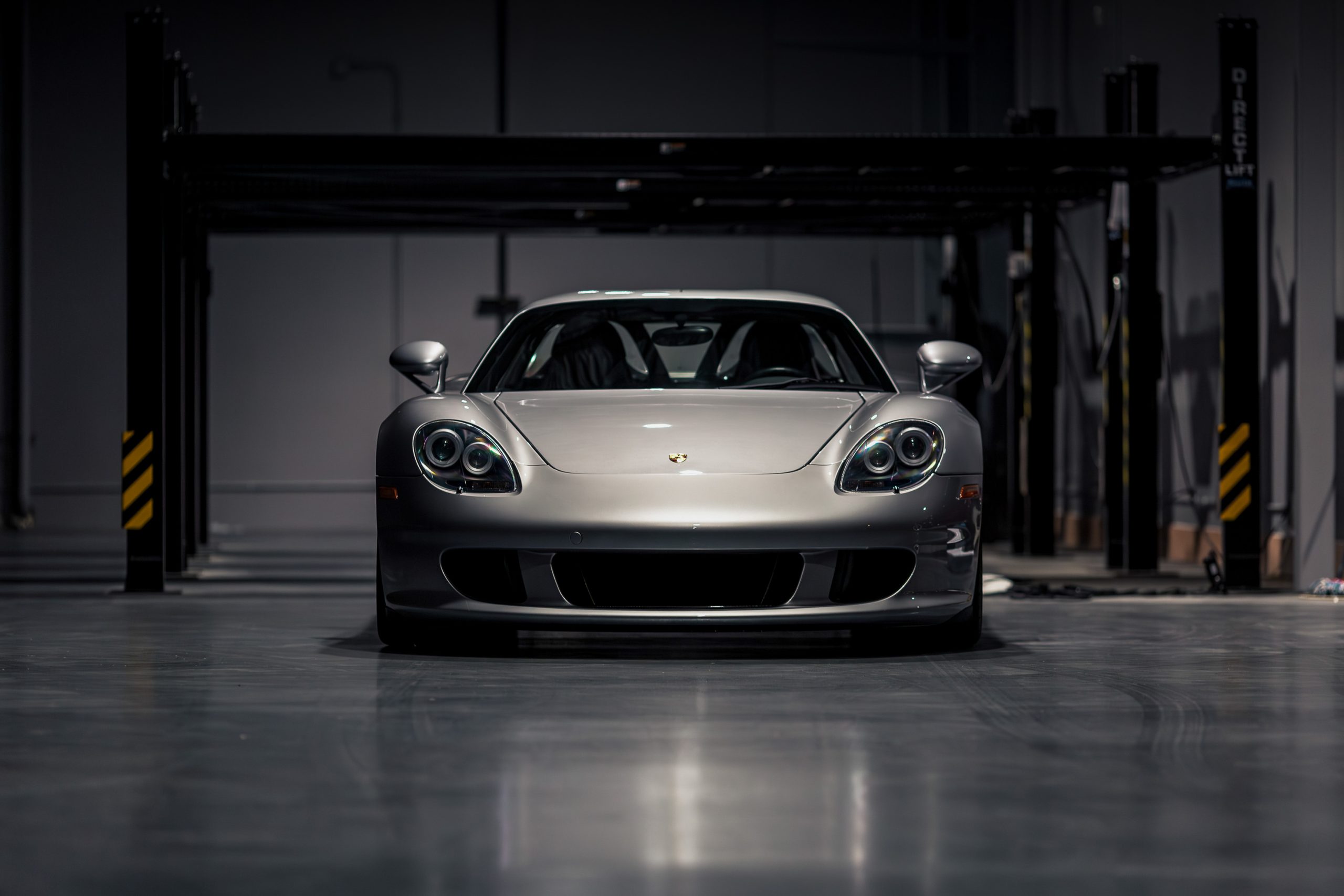Porsche Carrera GT Buyer's Guide
Buying a Porsche Carrera GT? Our (Seriously In-Depth) Buyer’s Guide Covers Key Insights, Potential Issues, Market Values, Expert Tips, What To Expect & MUCH More.
The Porsche Carrera GT is not just another exotic car—it is one of the greatest analog hypercars ever built, a race-bred machine with a Le Mans-derived V10, a manual transmission, and no driver aids. For those who seek the ultimate driving experience, the Carrera GT stands as a true unicorn in the modern supercar market, but buying one requires far more than just deep pockets.
This ultimate buyer’s guide goes beyond the usual talking points. We dive into the history of the Carrera GT, exploring how it went from an abandoned Le Mans prototype to one of the most sought-after Porsches ever made. We analyze market values and what factors drive prices, helping you understand why some Carrera GTs are worth millions more than others. If you’re serious about owning one, you’ll want to know what it’s like to drive—how the unforgiving clutch, high-revving V10, and lack of stability control make it both exhilarating and challenging. And of course, we’ll cover the real costs of ownership, maintenance, and the key problems you need to look for when buying.
Whether you’re a serious collector, a first-time hypercar buyer, or a Porsche enthusiast who wants to understand why the Carrera GT has reached legendary status, this guide will give you the most in-depth look at what it takes to buy, drive, and maintain one of the most iconic supercars ever built.
Don't forget our full in-depth guide to the Porsche Carrera GT where we go super deep on this model.

Why the Porsche Carrera is a Unique Unicorn Car to Buy
The Porsche Carrera GT is one of the most extraordinary and sought-after supercars ever built, a true unicorn in the world of high-performance automobiles. It represents a perfect storm of engineering excellence, exclusivity, and raw driving experience, making it one of the last pure driver’s cars before the modern era of electronic aids and hybrid technology took over. With its naturally aspirated 5.7-liter V10 engine, six-speed manual transmission, and carbon monocoque chassis, the Carrera GT offers an experience that no modern hypercar can replicate. Its reputation as both a dream car and a beast to tame only adds to its allure, making it one of the most legendary Porsche models ever created.
What makes the Carrera GT truly unique is that it was born from motorsport—its V10 engine was originally developed for Le Mans racing but found its way into a road car when Porsche’s racing plans changed. Unlike many modern supercars that rely on dual-clutch transmissions, turbochargers, and hybrid systems, the Carrera GT is completely analog, offering an unmatched level of engagement and connection between car and driver. Its lightweight carbon-fiber construction, mid-engine balance, and naturally aspirated power delivery create an experience that is both exhilarating and unforgiving, demanding true skill to master. For these reasons, the Carrera GT is one of the most collectible and valuable Porsches in existence, with prices steadily rising as enthusiasts recognize its significance in automotive history.
Development, History & Rarity Make This One Special Supercar
The Carrera GT’s origins trace back to Porsche’s racing division in the late 1990s, when the company was developing a Le Mans Prototype (LMP2000) race car powered by a V10 engine. The project was ultimately canceled, but Porsche saw an opportunity to adapt the 5.5-liter V10 into a road car, increasing its displacement to 5.7 liters and refining it for street use. By 2000, Porsche had unveiled the Carrera GT concept at the Paris Motor Show, generating immense interest from enthusiasts and collectors alike.
In 2003, Porsche officially launched the Carrera GT as a limited-production hypercar, utilizing cutting-edge carbon-fiber monocoque construction, pushrod suspension, and carbon-ceramic brakes. Unlike anything Porsche had built before, it was an extreme, race-derived machine designed for those who craved the most raw and engaging driving experience possible. Its race-inspired clutch and lack of stability control made it notorious for being difficult to drive at the limit, but that only added to its mystique.
Porsche initially planned to build 1,500 units, but due to tightening safety and emissions regulations, production was cut short in 2006. In total, 1,270 Carrera GTs were produced, making it one of the rarest Porsche hypercars ever made. Of those, about 644 cars were delivered to the U.S. Its limited production, racing heritage, and manual transmission have ensured that the Carrera GT remains one of the most desirable collector cars today, with values consistently increasing.
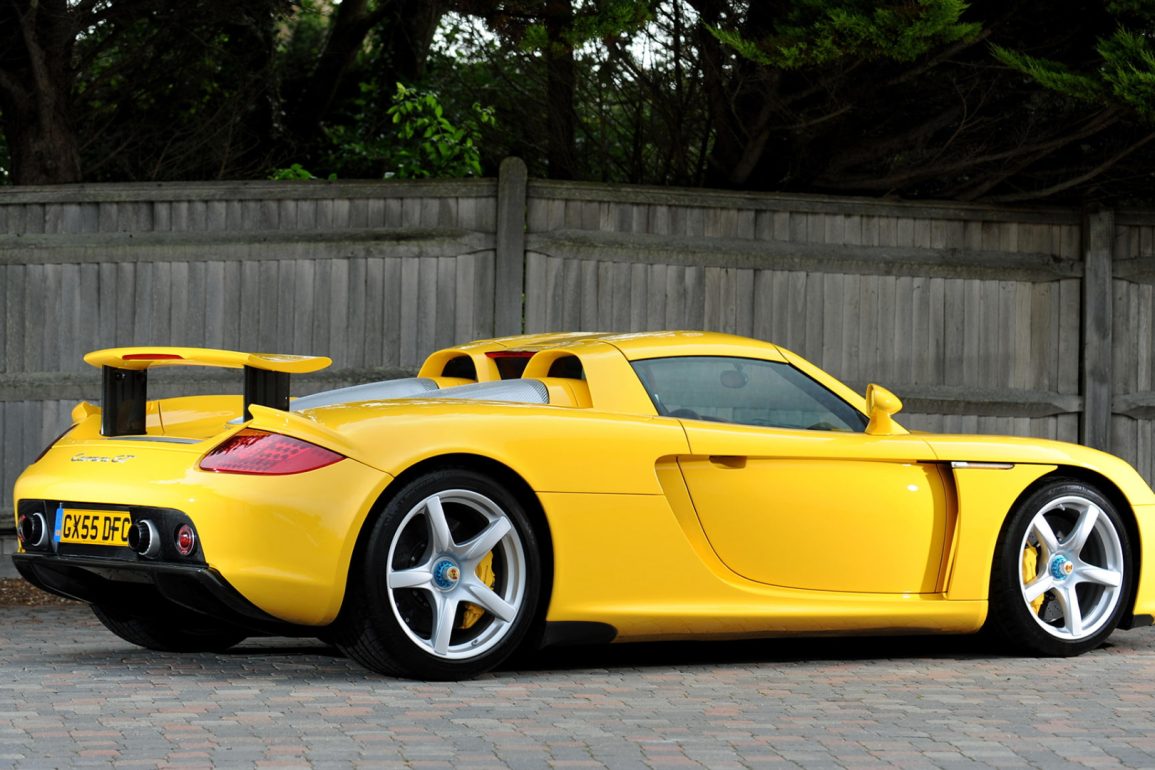
Porsche Carrera GT Market Value & Pricing
The Porsche Carrera GT is widely considered one of the most collectible and appreciating hypercars of the modern era. As a limited-production, naturally aspirated V10 supercar with a manual transmission, it represents the end of an era—a truly analog driving experience before the rise of hybrid and turbocharged hypercars. As a result, the Carrera GT has seen a dramatic increase in value over the last decade, with prices far exceeding their original MSRP of $448,400. However, not all Carrera GTs are valued equally. Certain factors—such as condition, color, mileage, originality, and provenance—can cause values to fluctuate by hundreds of thousands of dollars. Below, we break down current market values and the key factors driving Carrera GT pricing.
What Are Carrera GTs Worth?
Estimated Value Ranges:
High-Mileage (20,000+ miles), Well-Maintained: $1.2M – $1.5M
Low-Mileage, Pristine (5,000 – 15,000 miles): $1.7M – $2.2M
Ultra-Low Mileage (<3,000 miles) or Delivery-Miles: $2.5M – $3.5M+
Rare Color or Unique: $3M+
Market values for the Carrera GT have doubled in the last five years, and many experts believe that it will continue to appreciate as one of Porsche’s most legendary hypercars.
Mileage & Usage
Lower Miles = Higher Value
Cars with under 5,000 miles command highest prices ($2.5M+).
Cars in the 10,000 – 15,000-mile range are $1.7M – $2.2M.
Well-maintained with over 20,000 miles still hold value but are generally in the $1.2M – $1.5M.
That said, well-maintained higher-mileage Carrera GTs are preferable to low-mileage cars that have sat unused. Regular driving keeps the engine, transmission, and carbon-ceramic clutch in better order.
Condition & Maintenance
Service History Critical to Value
A well-maintained Carrera GT with complete service records from Porsche is always worth more.
Clutch replacement history important since its $30k to replace.
Cars that have been regularly driven and serviced properly hold their value better than those that have sat
Proper service history is critical for value retention. The Carrera GT V10 engine, carbon-ceramic clutch, suspension need special maintenance.
Originality & Matching Numbers
Collectors Want Original Cars
Matching-numbers engine and transmission are a must for collector-grade examples.
A car that has had a non-OEM repaint or modified interior will typically be worth $100K – $300K less than an original car.
Factory accessories (original keys, manuals, tool kit, car cover, and luggage set) add value.
Collectors prefer completely original cars with factory-correct parts. Any aftermarket modifications, repaints, or missing factory components can reduce value.
Paint Color & Rarity
Rare Colors Can Drive Big Prices
Certain rare colors significantly affect value. The rarer the color, the higher the value—PTS cars can exceed $3M+.
Common Colors: GT Silver Metallic (most common) equals baseline pricing. A Black & Basalt Black will be a slight premium over Silver.
Rare & Desirable Colors can be a $200K – $500K premium: Fayence Yellow, Seal Grey, Guards Red and Speed Yellow are all those colors.
Ultra-Rare Paint-to-Sample (PTS) Carrera GTs will add anywhere from $500K – $1M+ to their prices.
Provenance
Ownership History & Story
A unique ownership history or factory significance will always be valued higher and that is no different with the Carrera GT.
Cars with celebrity, Porsche factory, or racing history often command a premium.
Well-documented, single-owner cars tend to be more desirable than cars with multiple unknown owners.
Auction history plays a role—if a car has sold for record-setting prices in the past, it may influence sales.
Recent Porsche Carrera GT Values & Market Sales Trends
Below, our friends at Classic.com chart recent sales and trends in the Porsche 959 market.
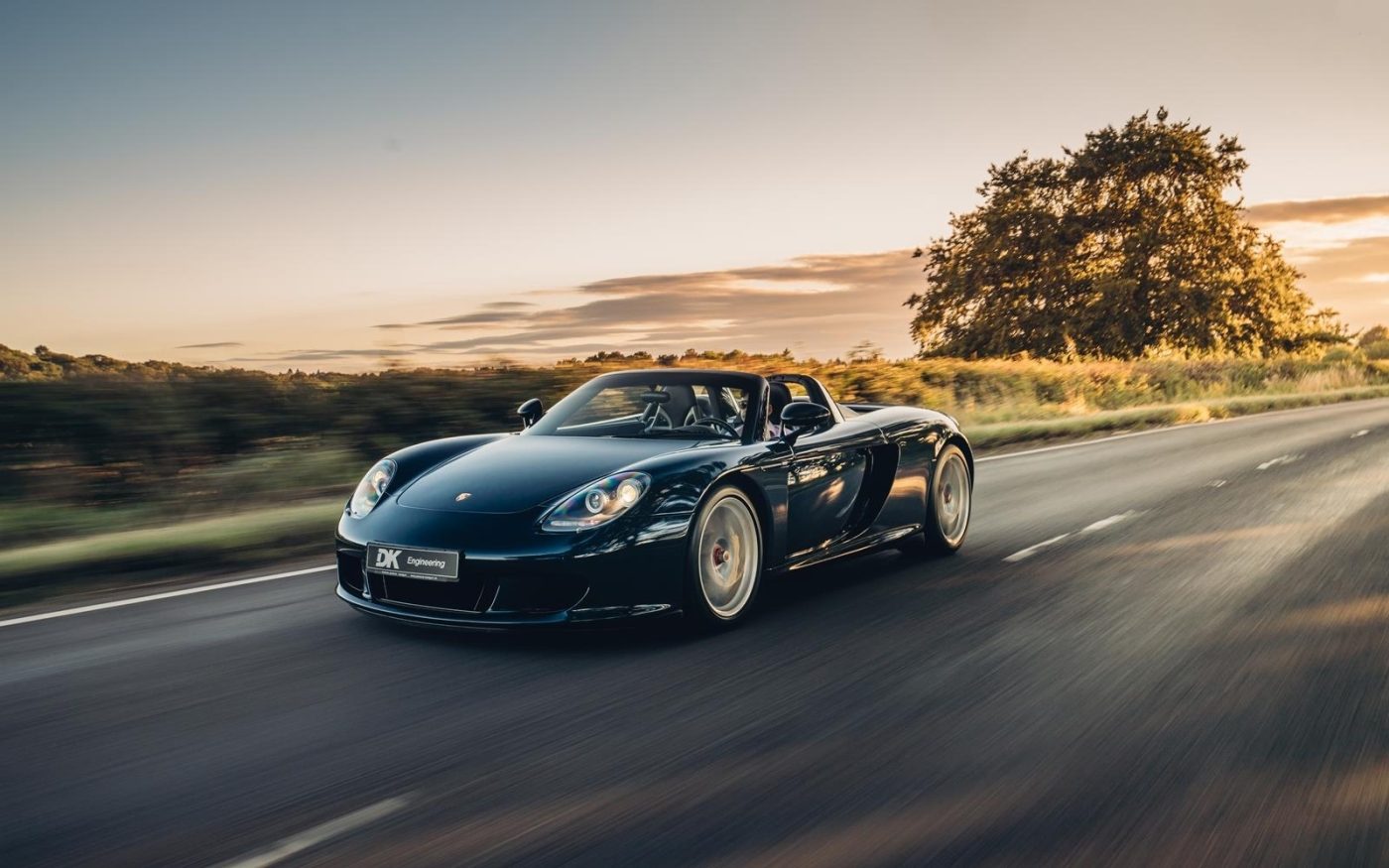
Porsche Carrera GT Driving Experience & What to Expect
Owning and driving a Porsche Carrera GT in 2025 is unlike anything else on the road. It’s not just another supercar—it’s a time machine back to an era when cars were truly raw, analog, and unfiltered. Unlike modern hypercars that feature dual-clutch transmissions, electronic stability control, and driver assists, the Carrera GT gives you nothing but pure mechanical connection.
For a new owner who isn’t a professional driver, the Carrera GT is both exhilarating and intimidating. It demands respect, patience, and practice to master. If you’re coming from modern high-performance cars like a 911 Turbo S, McLaren 720S, or even a Ferrari 812 Superfast, you will immediately notice that the Carrera GT is far less forgiving. It requires full driver engagement at all times.
The moment you step inside, the Carrera GT feels different from modern supercars. The cabin is minimalist and driver-focused, with no massive digital screens, no drive mode selectors, and no traction control toggles—just a proper six-speed gated manual and a small analog gauge cluster. Turning the key brings the race-derived 5.7L V10 to life, and it’s an event every single time. Unlike the muted, turbocharged engines in modern cars, the Carrera GT’s naturally aspirated V10 barks to life with an aggressive, mechanical tone. It idles high at first, around 1,200 RPM, before settling into a steady rhythm. Even at a standstill, you can tell this engine was built for racing, not just road use.
One of the first challenges new owners face is the infamous Porsche Ceramic Composite Clutch (PCCC). It is very different from a traditional clutch, with a high engagement point, no flywheel effect, and zero forgiveness. If you don’t rev enough, the car will stall immediately. If you rev too much and dump the clutch, you risk jerking the car forward or spinning the rear tires. A smooth launch requires precise throttle modulation, as slipping the clutch too much can wear it prematurely. Many first-time owners stall the car multiple times before getting it right. Some even practice in parking lots or low-traffic areas to get used to the engagement point. Once you master it, though, the Carrera GT becomes an extension of you—but it takes time.
The Carrera GT is not a car designed for city driving. If you plan on using it in stop-and-go traffic, be prepared for a stiff clutch that demands full attention at every light, heavy unassisted steering at low speeds, and a ride that, while not punishing, is firm due to the carbon monocoque construction. The car is happiest when you’re moving, not crawling in city traffic. It’s possible to drive it daily if you’re determined, but most owners only take it out on open roads, highways, or the occasional track day.
Once you get out of the city and onto clear roads, the Carrera GT transforms. Unlike turbocharged hypercars that deliver instant torque, the Carrera GT’s powerband is linear and builds with every RPM. The V10 screams past 8,000 RPM with a sound no modern supercar can replicate. The manual transmission requires deliberate shifts, and every gear change feels like an event. The car feels alive in your hands, with razor-sharp steering and immediate throttle response. The lack of electronic aids means you have complete control over the car’s behavior. If you’re aggressive with the throttle, the rear end can step out unexpectedly, requiring quick corrections. The car is balanced and predictable, but it does not tolerate mistakes like modern AWD hypercars do.
The Carrera GT’s brakes are phenomenal, but they require heat to work at their best. If you jump in and try to stop hard on cold carbon-ceramic rotors, you might not get the stopping power you expect. Once warmed up, the brakes bite hard, and the car scrubs speed effortlessly. Unlike modern hypercars with ABS and stability intervention, the Carrera GT relies entirely on driver skill to balance braking and cornering. The steering is incredibly direct, with no artificial feel or electronic assistance. Every bump, road texture, and input is felt through your hands, making it one of the most connected cars ever built.
New owners often describe their first full-throttle experience in the Carrera GT as a mixture of exhilaration and fear. The V10 howls like a Le Mans race car, unlike anything you’ve heard in a road car. The acceleration is relentless, but not brutally instant like modern turbocharged cars—it rewards drivers who keep the throttle pinned. If you push too hard, the car can bite back. The Carrera GT has caught out even experienced drivers, so it requires full respect at all times. Unlike a Ferrari LaFerrari or McLaren P1, there’s no hybrid system to smooth out power delivery. Unlike a 911 Turbo S, there’s no all-wheel-drive safety net. It’s pure, mechanical, and demands total focus.
In 2025, the Carrera GT still feels just as exotic, challenging, and thrilling as when it launched in 2003. However, there are some things to keep in mind. Tires matter more than ever, and modern rubber is better than what was available in the early 2000s, so ensuring your car has Michelin Pilot Super Sport N-spec tires is crucial for maximum grip. Values are high, but insurance is even higher, with most Carrera GTs now worth between $1.5M and $3M, making insurance costs exceed $15,000 – $25,000 per year. Maintenance is equally critical; a poorly maintained Carrera GT can be a nightmare to drive, while a properly sorted one is one of the most rewarding cars ever built.
For a new owner in 2025, the Carrera GT remains one of the most visceral and rewarding driving experiences on the planet. It is a race car for the road, not a casual supercar like a 911 Turbo or Ferrari 488. It demands patience, skill, and respect, but if you’re willing to learn its quirks and master its raw performance, there is nothing else like it. If you’re looking for an easy hypercar to drive, the Carrera GT is not for you. But if you want one of the last truly great analog driving machines, a car that connects you directly to the road, and an experience that modern cars can never replicate, the Carrera GT is absolutely worth it. It’s thrilling, terrifying, and unforgettable—all at the same time.
What The Experts Think About Driving The Carrera GT
Upon its release, the Carrera GT was met with universal acclaim, with many calling it the greatest supercar of its era. The Porsche Carrera GT remains one of the most thrilling and demanding hypercars ever built. Every review, from legendary journalists to professional racing drivers, highlights the same key points—its naturally aspirated V10 is intoxicating, its manual gearbox is precise, and its lack of electronic aids makes it both rewarding and unforgiving. Whether it’s described as "the best supercar ever" or "a machine that demands absolute respect," one thing is certain—the Carrera GT is an experience unlike anything else on four wheels. The Porsche Carrera GT has earned a reputation as one of the most exhilarating, raw, and challenging supercars ever built. Here’s what some of the world’s most respected automotive journalists and reviewers have said about driving the legendary V10 hypercar.
Jeremy Clarkson, Top Gear
"The Carrera GT is possibly the best supercar ever made. But it’s also terrifying. Unlike modern hypercars that flatter you with electronics, this car requires absolute skill. The moment you take your hands off the wheel, it’s waiting to kill you. And yet, it’s utterly magnificent. The way it revs, the way it delivers power, and the way it feels through the corners—it’s as close to a pure driving experience as you’ll ever get in a road car."
Chris Harris, EVO Magazine / Top Gear
"The Carrera GT is special because it punishes you for being clumsy but rewards you like nothing else when you get it right. The V10 sings to 8,400 rpm with a scream unlike any other road car. The clutch is tricky, the steering is weighty, and there’s zero margin for error, but that’s why it’s brilliant. It’s the last truly analog hypercar, and the experience is addictive."
Henry Catchpole, Carfection (formerly EVO)
"Driving the Carrera GT is a moment of clarity. The instant you start the engine, you realize it's not like anything else—no forced induction, no hybrid system, just a high-revving V10 that howls as you push it. The balance is exquisite, but it doesn’t tolerate mistakes. It’s a car that keeps you on edge, yet somehow, that makes it even more rewarding. You respect it, and in return, it gives you a connection to the road like no other supercar."
Rory Reid, Autotrader / Top Gear
"The Carrera GT is not just about numbers—it’s about feel. The steering is razor-sharp, the throttle response is immediate, and the sensation of shifting through the gears while hearing that race-derived V10 scream behind you is intoxicating. You don’t just drive this car; you experience it. Every single input matters, and that’s what makes it legendary."
Doug DeMuro, Automotive Reviewer & YouTuber
"The Carrera GT is not just fast—it’s raw, unfiltered, and uncompromising. There are no electronic aids to save you, and the clutch takes skill to master. But when you do, it delivers one of the most rewarding driving experiences of all time. It’s one of the last truly great driver’s cars, and that’s why it has become such a legend in the car world."
Andy Wallace, Le Mans Winner & Bugatti Test Driver
"The Carrera GT is one of the most exciting road cars I’ve ever driven. It’s completely mechanical in feel—no filters between you and the road. The weight distribution, the sound of the V10, and the way it challenges you make it unlike anything else. You have to respect it, but once you do, there’s no greater reward."
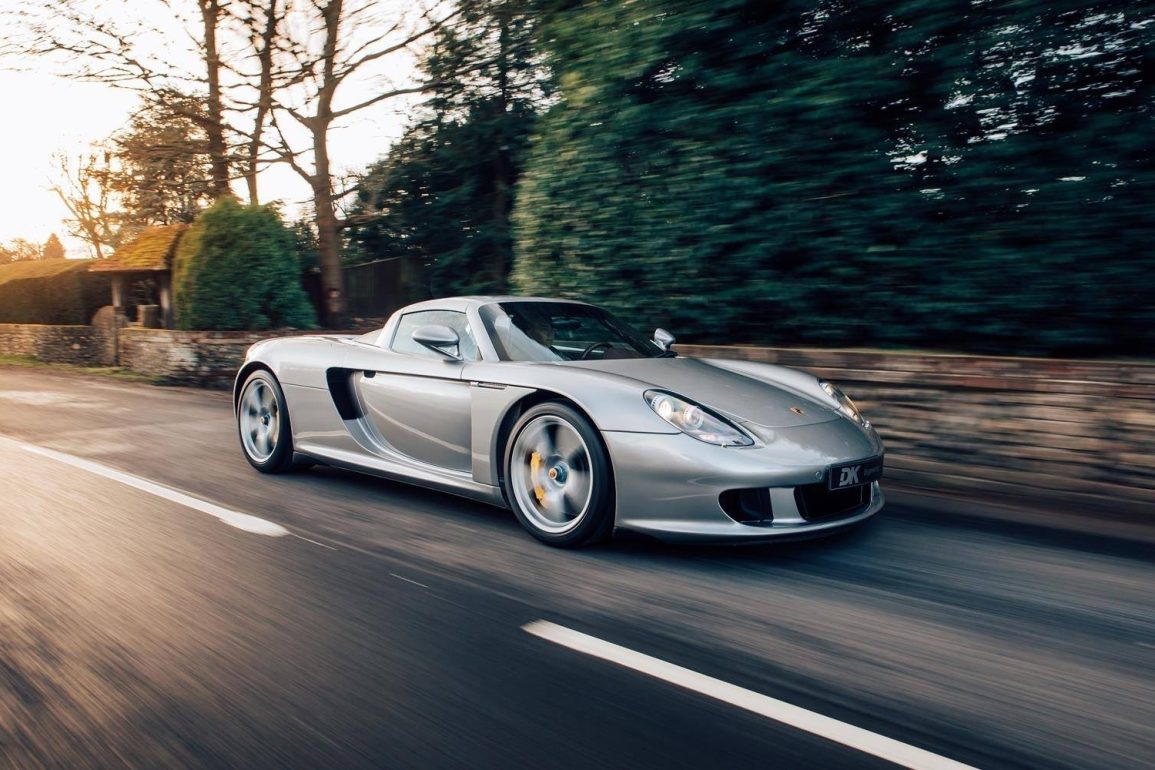
Getting Real - Carrera GT Costs to Own & Maintenance
How Should You Think About Porsche Carrera GT Ownership
If you are on this page and you are seriously in the market for a Porsche Carrera GT, then you know this thing ain't going to be cheap to own. Let's just get it out of the way now. Its not just about the multi-million dollar initial purchase price—it also comes with maintenance, insurance, and upkeep costs that reflect its status as a top-tier, exotic supercar. Ownership is not for the faint of heart. With values now ranging between $1.5 million and $3 million, maintaining a Carrera GT in peak condition is essential to preserving both its performance and long-term value. Given its race-derived 5.7L V10, unique carbon fiber chassis, and complex maintenance requirements, this is not a car for casual collectors. Below, we break down the real costs of ownership, maintenance expectations, parts availability, pricing, and insurance costs to give prospective owners a clear understanding of what it takes to own one of Porsche’s greatest analog hypercars.
Ownership Costs & Maintenance: What to Expect
The Carrera GT requires specialized maintenance to ensure it runs properly, and skimping on servicing can lead to catastrophic failures. Unlike modern supercars that feature predictive maintenance and long service intervals, the Carrera GT demands frequent inspections and careful attention to wear-prone components. For regular upkeep, owners should expect annual maintenance costs to fall between $8,000 and $15,000, but major services and repairs can easily push that figure into the $25,000 to $50,000+ range depending on the work needed.
The recommended maintenance schedule for the Porsche Carrera GT is more demanding than that of typical Porsche models. Porsche Irvine suggests a general schedule of regular service every 10,000 miles (primarily oil and filter changes), intermediate service every 20,000 miles (adding cabin air filter replacement and a more thorough inspection), and major service every 40,000 miles (including spark plug and belt replacement). They also advise annual servicing regardless of mileage. However, for the Carrera GT specifically, a major maintenance checklist indicates more frequent major services at 30,000, 60,000, 90,000, and 120,000 miles. These services include comprehensive checks and replacements such as engine and transmission oil and filter changes, drive belt replacement, valve clearance checks, spark plug replacement, and thorough inspections of the brake, cooling, and exhaust systems. NIMC recommends even more frequent oil changes for the Carrera GT, suggesting intervals of 5,000 to 7,500 miles. The Carrera GT maintenance schedule also specifies brake fluid changes every two years and tire sealant replacement every four years. This more intensive schedule, particularly the increased frequency of oil changes and major services at shorter intervals, implies a higher ongoing cost of ownership due to the need for more frequent professional servicing.
Routine Maintenance Costs
The costs associated with routine maintenance on a Porsche Carrera GT are significantly higher than those for more common Porsche models. One owner on the Teamspeed forum reported annual oil changes costing around $900. While another user on the same forum mentioned their uncle spending only $500 on maintenance in a year, this likely represents a minimal level of upkeep for a low-mileage vehicle and would not include more extensive routine services or any major maintenance. For comparison, a Reddit user with a Porsche 997 mentioned budgeting approximately $3,000 annually for servicing, and a Pistonheads user received a quote of £607 (approximately $750 USD) for an oil change on a Porsche 718 GTS at an official Porsche Centre. These figures suggest that even basic routine maintenance on a Carrera GT commands a premium due to the specialized expertise and potentially longer service times required. The $900 quoted for an oil change likely reflects the specific oil requirements, the intricate nature of the vehicle's engine, and the higher labor rates charged by technicians qualified to work on such a rare and complex machine.
Major Maintenance Costs
Major maintenance on a Porsche Carrera GT represents a substantial financial undertaking. Clutch replacement, a common service for high-performance manual transmission vehicles, is estimated to cost between $20,000 and $25,000, encompassing both parts and labor. However, some reports indicate that this cost could potentially reach as high as $80,000 at an official dealer. The first valve adjustment, typically required around the 30,000-mile mark, is also noted as an expensive service. Perhaps one of the most significant maintenance procedures for the Carrera GT is the engine-out service, which, as reported on the Pistonheads forum, can cost around £40,000 (approximately $50,000 USD at the time of the post) for a 12-year service. Furthermore, Hotcars.com suggests that a full service at 30,000 miles could result in a bill of approximately $30,000. These figures underscore the exceptionally high costs associated with major maintenance on the Carrera GT. The complexity of the vehicle's engineering, the specialized tools required, and the extensive labor involved in procedures like clutch replacement and engine removal contribute to these significant expenses. The wide variation in clutch replacement costs highlights the importance of obtaining multiple quotes from different service providers, including both official Porsche dealers and independent specialists with expertise in this model.
Potential for Unexpected Repairs
Beyond the scheduled maintenance, owning a Porsche Carrera GT carries the risk of encountering unexpected repairs, which can also be quite costly. Deterioration of the fuel pump diaphragm due to the ethanol content in modern gasoline is a known issue that can potentially necessitate the replacement of the entire fuel tank, a repair that can be very expensive. Shock absorber leaks are also reported as a relatively common problem with the Carrera GT, often requiring the replacement of the affected units. One particularly costly incident involved a driver who misused the clutch, resulting in the car becoming beached and requiring an extensive and expensive rebuild. Notably, Porsche issued a stop-drive order and recall for the Carrera GT due to potential issues with the spherical joints in the suspension system. The remedy involves replacing these components with new titanium parts . This recall indicates a recognized potential for failure in a critical part of the vehicle's suspension. Owners should be aware of these potential issues and factor in a contingency budget for unforeseen repairs that may arise.
Parts and Consumables
The cost of owning and maintaining a Porsche Carrera GT is also significantly influenced by the availability and pricing of replacement parts and consumables.
Fortunately, there are several sources for obtaining parts for the Porsche Carrera GT. Eurospares specializes in genuine Porsche parts and emphasizes their ability to source components directly from the factory, often with minimal lead times. This is a crucial resource for owners seeking to maintain the originality and performance of their vehicles. For those looking for alternative options, NAPA Auto Parts lists aftermarket parts for the Porsche Carrera GT on their website, potentially offering more budget-friendly solutions for certain components. FCP Euro also provides a range of parts for the Carrera GT, including both genuine and aftermarket options. Scuderia Car Parts focuses on high-performance vehicles and offers both genuine and aftermarket tuning and replacement parts for the Carrera GT . The existence of these various suppliers provides owners with a degree of choice when it comes to sourcing necessary parts for maintenance and repairs. However, for highly specialized or rare components, relying on genuine Porsche parts from suppliers like Eurospares might be the only viable option, potentially involving longer wait times depending on factory availability.
The pricing of replacement parts for the Porsche Carrera GT can be exceptionally high, reflecting the vehicle's status as a limited-production supercar. A new clutch kit from Suncoast Parts is listed at a price of $34,000. Remanufactured clutches might also be available through Porsche. In a Reddit discussion with a Porsche parts employee, an oil change and a new instrument cluster were quoted at a staggering $9,000. The same employee also provided eye-watering prices for other components, such as $260,000 for an engine, $15,000 for a seat, $10,000 for a bumper, and $50,000 for an underbody engine cover. Regarding the braking system, front and rear brake rotor sets from Suncoast Parts are priced at $19,800 each, with brake pad sets costing around $800. Interestingly, an aftermarket carbon-ceramic brake upgrade from Repasi Motorwerks is listed at $17,500, with the company noting that factory replacement could cost upwards of $90,000. These prices clearly demonstrate that owning a Carrera GT involves a significant financial risk should any major parts replacements become necessary. The availability of aftermarket options for some components might offer some cost savings, but owners should carefully consider the quality and reliability of these alternatives, especially for critical systems.
Tire Lifespan and Replacement Costs
Tires are a critical safety component for any vehicle, and for a high-performance machine like the Carrera GT, their condition is paramount. Porsche recommends replacing the tires on the Carrera GT every four years due to the hardening of the rubber compound over time. Many tire manufacturers and automotive experts advise replacing tires between five and six years from their manufacturing date, regardless of tread depth.
Given that the last Carrera GT was produced in 2006, any original tires would be well beyond their recommended lifespan, making immediate replacement a necessity for any potential buyer. The good news is that Porsche just announced new tires just for the Carrera GT, something owners have been begging for. Expect a set to cost over $3,000 given these will be manufactured only for the Carrera GT.
Insurance Costs
Insuring a high-performance vehicle like the Porsche Carrera GT involves considerations beyond those for a standard passenger car. Insurance premiums for high-performance vehicles are typically higher due to several factors. Expect to pay:
Standard Annual Policy (Agreed Value $1.5M – $3M): $15,000 – $30,000 per year
Full-Coverage Collector Car Insurance (With Limited Mileage): $10,000 – $15,000 per year
Policies with low annual mileage limits tend to be more affordable, but full coverage for a regularly driven Carrera GT can exceed $25,000 per year.
Insurance companies assess the risk associated with the vehicle, taking into account its make, model, market value, engine horsepower, and overall performance capabilities. High-performance cars like the Carrera GT often have a greater potential for high-speed accidents and may be at a higher risk of theft, both of which contribute to increased insurance costs. Additionally, the cost of repairing or replacing parts on such vehicles is typically much higher, further driving up insurance premiums.
The Porsche Carrera GT notably lacks modern electronic stability control, a safety feature commonly found on contemporary vehicles, which might also influence an insurer's assessment of risk. The driver's personal profile, including age, driving history (accidents and violations), and the geographical location where the vehicle is garaged, also play significant roles in determining insurance rates. Urban areas and states like New York, where traffic density and the likelihood of accidents or theft might be higher, often have higher average insurance premiums compared to more rural locations or other states.
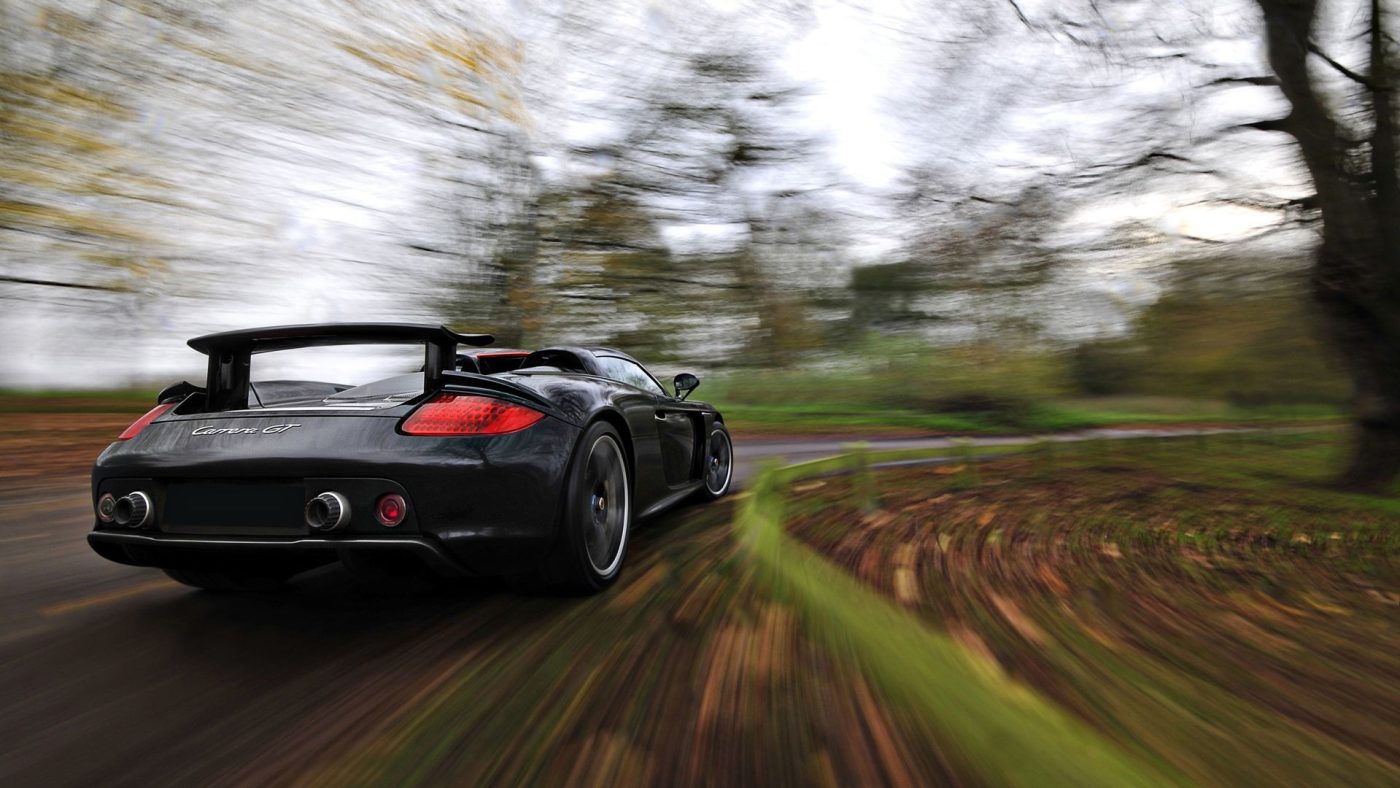
Some Common Porsche Carrera GT Problems & Things to Look For When Buying
Ensuring Performance, Authenticity, and Long-Term Enjoyment
The Porsche Carrera GT is one of the most exhilarating and collectible hypercars ever built, but it’s also notorious for being demanding to maintain and drive. Unlike modern hypercars that feature electronic safety systems and user-friendly technology, the Carrera GT is raw, analog, and highly mechanical, requiring meticulous maintenance. If you’re considering buying a Porsche Carrera GT, it’s critical to know the most common problems and issues that can arise. Some of these issues are expensive to fix, and neglecting them can turn a dream purchase into a nightmare. Below is a detailed breakdown of the key problems to watch for when buying a Carrera GT.
Porsche Ceramic Composite Clutch (PCCC) – Extremely Expensive to Replace
The Porsche Ceramic Composite Clutch (PCCC) in the Carrera GT is one of the most advanced yet challenging components ever fitted to a road car. Designed to handle the extreme demands of its Le Mans-derived 5.7L V10, the PCCC is lightweight, heat-resistant, and incredibly strong. Unlike conventional clutches, it has no flywheel effect, meaning it engages abruptly and requires precise throttle control. While this makes the Carrera GT highly responsive at speed, it also makes low-speed driving, stop-and-go traffic, and parking extremely difficult. Many first-time owners struggle with smooth launches, often stalling multiple times before mastering its engagement.
Despite its durability under high-performance conditions, the Carrera GT’s clutch is not forgiving of poor technique. If driven incorrectly, excessive slipping can rapidly wear it out, requiring a costly replacement. A new PCCC costs between $25,000 and $30,000, primarily due to the labor-intensive process of removing the entire engine and transmission to access the clutch assembly. Some Carrera GTs have needed clutch replacements as early as 5,000 miles, while properly driven examples can last up to 25,000 miles or more. Because of this, checking clutch wear percentage before purchasing a Carrera GT is essential.
For those who master its quirks, the Carrera GT’s clutch is a defining part of its pure, analog driving experience, offering a level of connection that modern hypercars lack. However, it remains one of the most demanding supercars to operate, requiring patience, skill, and respect. Owners who fail to adapt to its behavior will not only find it frustrating but may also face one of the most expensive clutch replacements in the automotive world.
Carbon Fiber Monocoque & Body Panels – Nearly Impossible to Repair
The Porsche Carrera GT’s carbon fiber monocoque and body panels were groundbreaking at the time of its release, setting a new standard for lightweight construction in a road-going supercar. The carbon fiber tub, developed in collaboration with Porsche’s motorsport division, was derived from the brand’s experience in Le Mans prototype racing. Unlike traditional aluminum or steel chassis, the Carrera GT’s monocoque offers incredible strength, rigidity, and weight savings, giving the car its razor-sharp handling and exceptional power-to-weight ratio. However, this cutting-edge construction comes with significant downsides—damage to the carbon fiber chassis or body panels is extremely difficult and expensive to repair, and in many cases, it may be completely unrepairable.
One of the biggest risks for Carrera GT owners is that even minor structural damage can compromise the entire monocoque. Unlike metal-bodied cars, where dents can be reshaped or panels can be replaced, carbon fiber is a woven composite material that relies on its internal structure for strength. When subjected to impact, the resin and fibers can fracture beneath the surface, leading to hidden structural weaknesses that may not be immediately visible. A simple crack in the monocoque could result in a repair bill exceeding six figures, and in severe cases, Porsche may deem the car irreparable, effectively totaling a multi-million-dollar hypercar.
The Carrera GT’s carbon fiber body panels, including the front and rear clamshells, doors, and underbody, are equally problematic when it comes to repairs. If damaged, these panels are extremely costly to replace, as they were produced in limited quantities and are no longer widely available. Finding original replacements often means sourcing from wrecked donor cars or Porsche Classic’s limited restoration program, with wait times stretching for months or even years. A damaged rear clamshell alone can cost over $50,000, and full body repairs can easily exceed $250,000.
For potential buyers, checking for previous accident damage is critical, as even low-speed impacts can cause undetected structural issues. A Carrera GT with monocoque damage or questionable repairs will see a massive drop in value, as most collectors will avoid cars with compromised integrity. Owners must also be extremely cautious while driving, as the car’s low ride height, stiff suspension, and lack of modern safety features mean that an off-track excursion or curb strike could have catastrophic consequences. While the Carrera GT’s carbon fiber construction contributes to its legendary driving dynamics, it also makes it one of the most delicate and high-risk supercars to own, requiring meticulous care and attention to avoid costly damage.
Engine Mount Bolts – Known Failure Point
The engine mount bolts in the Porsche Carrera GT are a well-documented weak point, posing a potential risk to both the engine’s stability and overall driving performance. These bolts secure the Le Mans-derived 5.7L V10 engine to the carbon fiber monocoque and rear subframe, playing a crucial role in managing the engine’s movement under load. Given the Carrera GT’s high-revving nature and extreme vibrations, the original factory-installed engine mount bolts have been known to weaken and, in some cases, shear completely, leading to increased drivetrain movement and, in severe instances, the risk of detachment.
This issue stems from the high stresses the Carrera GT’s powertrain experiences during aggressive driving, particularly under hard acceleration and rapid deceleration. Over time, the constant vibration and torque forces can cause metal fatigue in the mounting hardware, leading to failure. A broken engine mount bolt allows the engine and transmission to shift excessively, which not only impacts handling but can also put strain on other critical components, such as drivetrain linkages and exhaust mounts. If left unchecked, this could cause further damage to surrounding parts, resulting in costly repairs beyond just the bolts themselves.
Porsche eventually acknowledged this issue and issued a technical bulletin advising Carrera GT owners to replace the factory engine mount bolts with stronger, updated versions. These revised bolts are reinforced to better withstand the stresses of the high-revving V10, significantly reducing the risk of failure. Many Carrera GT specialists now recommend replacing the engine mount bolts as part of regular maintenance, particularly for cars that see frequent spirited driving or track use. For prospective buyers, it is essential to verify whether this critical update has been performed, as original bolts that have not been replaced could be a ticking time bomb. Addressing this issue proactively ensures the long-term reliability of the Carrera GT’s powertrain and prevents expensive secondary damage that could arise from excessive engine movement.
Fuel System Issues from Lack of Use
The Porsche Carrera GT’s fuel system is a critical component that, like many high-performance supercars, can develop issues when the car is not driven regularly. Unlike modern fuel-injected cars with self-cleaning systems and advanced materials designed for long periods of inactivity, the Carrera GT’s race-derived V10 engine and associated fuel components were engineered for regular use and high-load driving conditions. When left sitting for extended periods, fuel system degradation becomes a significant concern, leading to potential performance problems, expensive repairs, and even safety hazards.
One of the most common issues with Carrera GTs that have been stored for long periods is fuel varnishing and injector clogging. Modern fuel, particularly ethanol-blended gasoline, tends to break down over time, leaving gum-like deposits in the fuel injectors and fuel lines. These deposits can restrict fuel flow, leading to rough idling, misfires, and reduced performance. In extreme cases, clogged injectors can cause lean running conditions, increasing the risk of detonation and engine damage. Owners who take a low-mileage Carrera GT out for a spirited drive after it has sat for months or years without proper fuel system maintenance may experience hesitation, uneven throttle response, or even power loss under load.
Another significant concern is fuel line degradation and leaks, which can become a serious safety issue. The Carrera GT uses high-pressure fuel lines, and when these lines sit exposed to modern ethanol-blended fuels without circulation, rubber and plastic components can harden, crack, or shrink. This can lead to small leaks that may not be immediately noticeable but pose a major fire hazard if left unaddressed. In rare cases, improperly stored cars have developed pressurized fuel leaks, which can drip onto hot engine components and create a significant risk of fire.
Preventative maintenance is crucial to keeping the Carrera GT’s fuel system in optimal condition. Owners should use high-quality fuel stabilizers if storing the car for long periods, ensure that the fuel system is regularly flushed and cleaned, and replace aging fuel lines proactively. For prospective buyers, checking the service history for fuel system maintenance is essential, as neglected fuel system issues can lead to costly repairs and potential drivability problems. Regular use is the best way to keep the Carrera GT’s fuel system healthy, ensuring that its Le Mans-derived V10 delivers the razor-sharp performance it was designed for without the complications that come from long-term storage neglect.
Suspension Wear – Aging Components
The Porsche Carrera GT’s suspension system was engineered for extreme performance, incorporating race-inspired pushrod suspension, a double-wishbone setup, and components designed to handle the immense forces generated by its Le Mans-derived V10 engine. While this advanced suspension design provides exceptional handling precision and road feel, it also comes with aging-related concerns that owners and prospective buyers must be aware of. As the Carrera GT ages, its suspension components wear down, leading to potential handling issues, ride quality degradation, and expensive repair costs.
One of the most common problems with Carrera GT suspension wear involves the control arm bushings and suspension mounts, which deteriorate over time, even if the car isn’t driven frequently. These rubber and polymer components harden, crack, or degrade due to heat cycles, environmental exposure, and lack of use, causing the car to lose its sharp handling characteristics. When these bushings wear out, drivers may notice increased play in the suspension, a vague or disconnected steering feel, and even instability under hard braking or acceleration. Since the Carrera GT’s handling precision relies on tight tolerances, any looseness or deflection in the suspension system can negatively impact the driving experience.
The shocks and dampers are another critical area of concern. The Carrera GT uses high-performance coilovers that are built for aggressive track driving, but like all suspension components, they degrade with age and miles. If the shocks begin to fail, owners may experience reduced ride control, excessive bouncing, or uneven weight distribution under cornering loads. Given that replacement parts are rare and expensive, a full suspension refresh can easily exceed $15,000 to $20,000, especially if additional components like tie rods, sway bar links, and ball joints need replacement.
For prospective buyers, it’s essential to inspect the suspension system carefully, ensuring that all bushings, dampers, and mounts are in good condition. A well-maintained Carrera GT should feel planted, responsive, and razor-sharp, with no excess play in the steering or noticeable body roll. Owners who drive their cars regularly and have kept up with proactive suspension servicing will have a much better experience than those with low-mileage examples that have sat for extended periods without use. Given the Carrera GT’s high market value and increasing collectibility, keeping its suspension system in top condition is not just essential for driving enjoyment but also for long-term value retention.
Brake Wear – Carbon Ceramic Rotors are Expensive to Replace
The Porsche Carrera GT’s braking system was revolutionary at the time of its release, featuring Porsche Ceramic Composite Brakes (PCCB) with massive carbon-ceramic rotors designed for extreme performance. These brakes provide exceptional stopping power, fade resistance, and weight savings, making them ideal for a high-revving, rear-wheel-drive hypercar. However, while carbon-ceramic brakes are highly effective, they are also incredibly expensive to replace and require careful maintenance to ensure longevity. Owners who track or aggressively drive their Carrera GT must be particularly mindful of rotor wear, as replacing a full set of carbon-ceramic discs can cost upwards of $35,000 to $50,000.
Unlike traditional iron brake rotors, carbon-ceramic discs do not wear in the same way and can theoretically last much longer under normal road use. However, they are also more susceptible to damage from improper handling, sudden temperature changes, and contamination from foreign materials. A significant concern with the Carrera GT’s brakes is that small surface imperfections, chips, or cracks can lead to premature rotor failure, necessitating full replacement. If debris gets caught between the brake pads and rotors, it can score the ceramic surface, reducing braking efficiency and leading to costly repairs.
Another issue is that carbon-ceramic rotors require heat to perform optimally, meaning they can feel less effective when cold. While this is common in high-performance braking systems, Carrera GT owners who frequently drive at low speeds or in urban environments may experience uneven brake wear over time. The original OEM brake pads are also expensive, and improper pad selection can lead to accelerated rotor degradation. If an owner switches to aftermarket brake pads that are not specifically designed for carbon-ceramic rotors, it can cause excessive wear, forcing an early rotor replacement.
For prospective buyers, brake condition should be a top priority during an inspection. A properly maintained set of carbon-ceramic rotors should show minimal surface imperfections and even pad wear. If the rotors have visible cracks, excessive scoring, or significant wear, replacing them will be one of the most expensive maintenance costs associated with Carrera GT ownership. While carbon-ceramic brakes offer world-class performance, maintaining them correctly is essential to avoiding unnecessary and costly repairs. Owners who use their cars regularly and avoid excessive low-speed braking will maximize the lifespan of these high-performance components.
Buying A Porsche Carrera GT FAQs
Here are all the questions we've received from readers considering a Porsche Carrera GT for their garage
How much does a Porsche Carrera GT cost today?
As of March 2025, the Porsche Carrera GT typically sells in the range of $1.5 to $2 million, depending on factors such as mileage, condition, color, and history. Exceptional examples with very low mileage can exceed $2 million. Originally sold new for around $440,000, the Carrera GT has significantly appreciated in value due to its limited production (only 1,270 units produced), iconic design, V10 engine, and collectible status.
Where Are Porsche Carrera GT Values Headed?
In the short term (2025-2027) we expect that prices are going to continue rising slowly and steadily, with well-maintained examples surpassing $3M+ in the near future. Low-mileage examples in rare colors will appreciate the fastest. Over the long-term (2030 and beyond), the Carrera GT will be seen as one of the last truly analog hypercars, further increasing demand. As EVs and hybrids take over, naturally aspirated, manual hypercars will become even more collectible. Mint-condition, low-mileage examples could exceed $5M+ in the next decade.
Is the Porsche Carrera GT a good investment?
Yes—if you want one of the most significant, thrilling, and collectible Porsche hypercars ever made. The Porsche Carrera GT is more than just a supercar—it’s a piece of automotive history. Its race-derived V10, six-speed manual transmission, and raw, unforgiving driving experience make it one of the last truly analog hypercars. With limited production, increasing collector demand, and skyrocketing values, it remains a blue-chip investment in the automotive world. With prices only trending upward, the Carrera GT remains one of the most iconic, valuable, and exhilarating Porsche hypercars ever built.
What should I check before buying a used Carrera GT?
Buying a Porsche Carrera GT requires careful consideration due to its unique engineering, rarity, and potential for expensive repairs. Here's what you should thoroughly inspect or verify before purchasing:
1. Service History & Documentation
Confirm full-service history, preferably Porsche-authorized. Verify all recalls have been addressed, especially clutch-related recall campaigns. Check maintenance intervals and service records thoroughly.
2. Clutch & Transmission
Clutch wear: The Carrera GT has a sensitive ceramic clutch, notorious for early wear. Check clutch wear percentages—replacement is very expensive (often $20,000–$30,000). Transmission condition should be smooth gear changes, no grinding or delays.
3. Engine & Drivetrain
Inspect for leaks from the engine bay (oil, coolant, or hydraulic fluids). Verify regular oil changes and routine service history—V10 engines require meticulous maintenance. Listen for abnormal engine noises, vibrations, or rough idle.
4. Maintenance Records & History
Verify full, documented service history (preferably from Porsche specialists). Confirm if the car received all recommended factory recalls or service bulletins. Look specifically for clutch replacements, engine-out servicing, and fluid flush intervals.
5. Tires & Wheels
Tires: Confirm they're recent and Porsche-approved, as original-spec tires may be outdated, reducing handling and safety. OEM magnesium wheels should be crack-free—replacement wheels are costly.
6. Brakes & Suspension
Ceramic brakes (PCCB): Expensive to replace, check remaining life, disc condition, and signs of cracks. Inspect suspension components and bushings for cracks, wear, or corrosion.
7. Body & Paint
Look for evidence of repainting, panel replacement, or accident damage (use a paint thickness gauge). Underbody inspection should confirm there are no scrapes, especially around the carbon-fiber panels.
8. Interior
Leather and Alcantara condition: Check for shrinkage, discoloration, or damage from sun exposure. Verify electrical functionality: Climate control, infotainment, gauges, and warning lights.
9. Service History & Provenance
Full, documented maintenance records are essential. Verify previous ownership history (enthusiast ownership is a big plus). Request Porsche-certified pre-purchase inspection if possible.
9. Suspension and Brakes
Carrera GT suspension components and carbon-ceramic brakes are costly; ensure they're well-maintained and show minimal wear. Verify there is no unusual vibration, noise, or play in suspension components.
10. Documentation and History
Confirm authenticity: VIN matching, clear title, and clean history (no salvage or major accidents). Comprehensive documentation, including maintenance records, recall campaigns, clutch servicing, and mileage tracking enhance long-term value.
Strong Recommendation:
Always arrange for a pre-purchase inspection (PPI) by a Porsche specialist who has experience specifically with Carrera GTs. This is crucial, as even minor issues can translate into major costs.
How much does it cost to maintain a Porsche Carrera GT?
Maintaining a Porsche Carrera GT is notably expensive due to its advanced engineering and limited availability of parts. Annual servicing typically ranges from $5,000 to $10,000 under normal usage, but costs can escalate significantly for major services. A clutch replacement—common every 10,000–20,000 miles—can run between $20,000 to $30,000, while scheduled engine services often range from $5,000 to $15,000 depending on the extent of work required. Additionally, specialized tires, carbon-ceramic brakes, and unique carbon-fiber components add further cost. Therefore, annual ownership costs, including insurance, regular maintenance, and preventive care, typically average around $10,000 to $20,000 or more, even with minimal use.
What are the most expensive parts to replace on a Carrera GT?
The Porsche Carrera GT is renowned for its extraordinary performance and exclusivity—but ownership comes with significant maintenance costs. The most expensive components include the clutch, which typically requires replacement every 10,000–20,000 miles at a cost of $20,000–$30,000. Its sophisticated carbon-ceramic brakes also command high prices, with full replacements costing upwards of $20,000–$30,000. Additionally, original magnesium wheels can run $8,000–$10,000 each, and the Carrera GT’s bespoke carbon fiber body panels can range from $5,000 to over $20,000 per panel if damaged.
Further substantial costs arise from its motorsport-derived V10 engine, where a major repair or rebuild can exceed $50,000–$100,000. The rare magnesium wheels cost around $10,000 each, and intricate suspension components can add another $10,000–$15,000 per major repair. Prospective buyers should carefully verify maintenance history, condition, and recent servicing records to mitigate the risk of incurring substantial unexpected expenses.
What are the biggest problems with the Porsche Carrera GT?
The Porsche Carrera GT is highly sought-after but comes with certain unique challenges, primarily related to its advanced, motorsport-derived engineering. One of the most notorious issues is its carbon-ceramic clutch, which can wear prematurely if not driven correctly. Clutch replacements are expensive, running between $20,000 and $30,000, making a thorough pre-purchase clutch inspection essential.
Another significant area of concern involves the car's handling characteristics. Due to its mid-engine layout, immense power, and lack of modern driver aids, the Carrera GT has a reputation for being challenging to drive—especially at the limit. Early models lacked advanced traction control and stability management systems, increasing the risk of accidents for inexperienced drivers. Consequently, it's important to verify the car's accident history and confirm no structural damage has occurred.
Lastly, the limited availability and high cost of replacement parts pose a challenge. Components like magnesium wheels, carbon-fiber body panels, suspension parts, and even routine engine maintenance items can be prohibitively expensive. Maintaining a Carrera GT thus requires specialized knowledge, meticulous maintenance, and significant ongoing expenses. Potential buyers should always factor these considerations into their decision and ensure the car comes with comprehensive maintenance records.
Will Porsche continue to support the Carrera GT with parts and service?
Porsche continues to actively support the Carrera GT, recognizing it as a cornerstone of their modern heritage and a highly collectible supercar. Due to its exclusivity and significant value, Porsche Classic—the brand’s dedicated division for supporting historic vehicles—provides comprehensive service, maintenance, and original replacement parts. This commitment helps owners maintain the performance, authenticity, and investment value of their Carrera GTs.
However, availability and costs for Carrera GT components can be challenging. Given the model's unique motorsport-derived parts—such as carbon-ceramic brakes, carbon fiber body panels, magnesium wheels, and its high-strung V10 engine—many of these components require specialized manufacturing processes and limited production runs, resulting in elevated prices and occasional scarcity. Porsche does periodically produce limited batches of critical parts, ensuring they remain available, though buyers must expect premium costs.
Before purchasing a Carrera GT, prospective owners should connect with a Porsche dealership or a trusted Porsche Classic partner to verify parts availability, maintenance costs, and long-term support. While Porsche intends to sustain Carrera GT ownership for many years to come, owners must be prepared for the inherent complexity and cost associated with preserving one of Porsche’s most iconic modern supercars.
What were the most popular colors for the Carrera GT?
The Porsche Carrera GT was originally offered in a limited range of colors, with GT Silver Metallic emerging as the most popular and iconic choice—representing around half to nearly two-thirds of all production models. This shade gained prominence as the color of the original concept vehicle and remains highly desirable among enthusiasts and collectors. Other standard colors, such as Black, Basalt Black Metallic, and Seal Grey Metallic, were available but produced in lower quantities, while Guards Red and Fayence Yellow were also notable, though considerably less common.
Aside from standard options, Porsche offered limited Paint-to-Sample (PTS) choices, allowing buyers to select custom colors. These unique PTS examples are now extremely rare, highly coveted, and typically command significant premiums on the collector market due to their exclusivity. Today, color originality and rarity heavily influence Carrera GT values, making color verification essential when purchasing.




